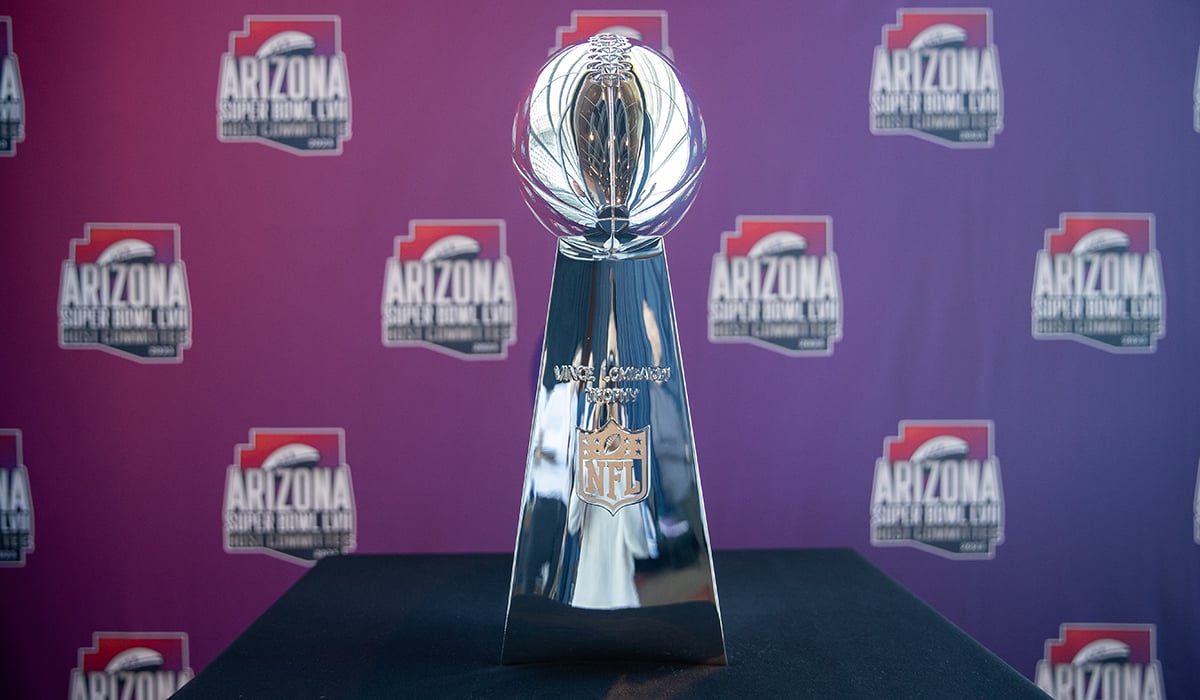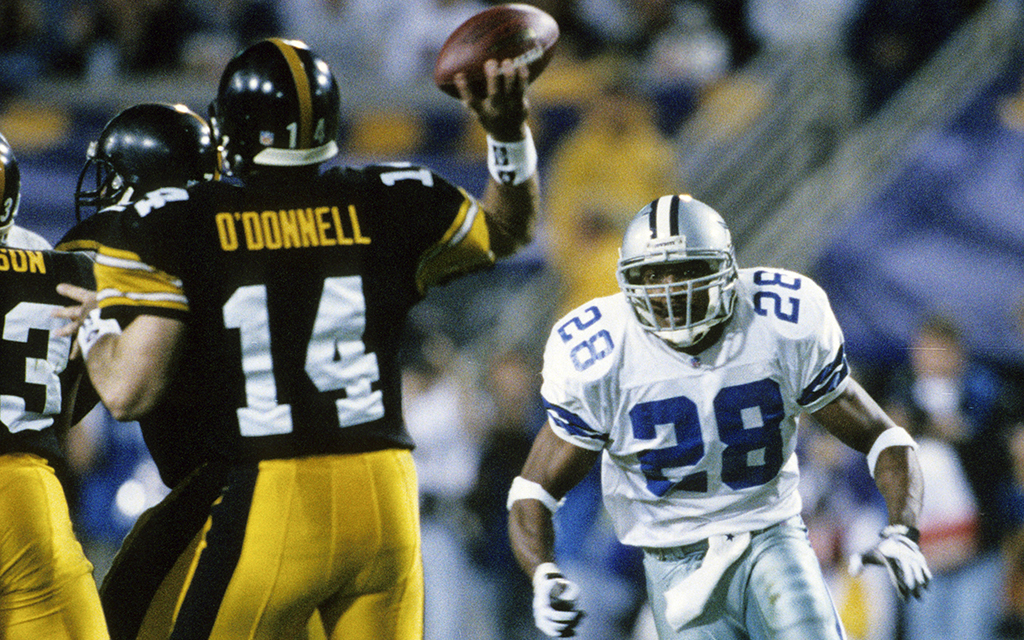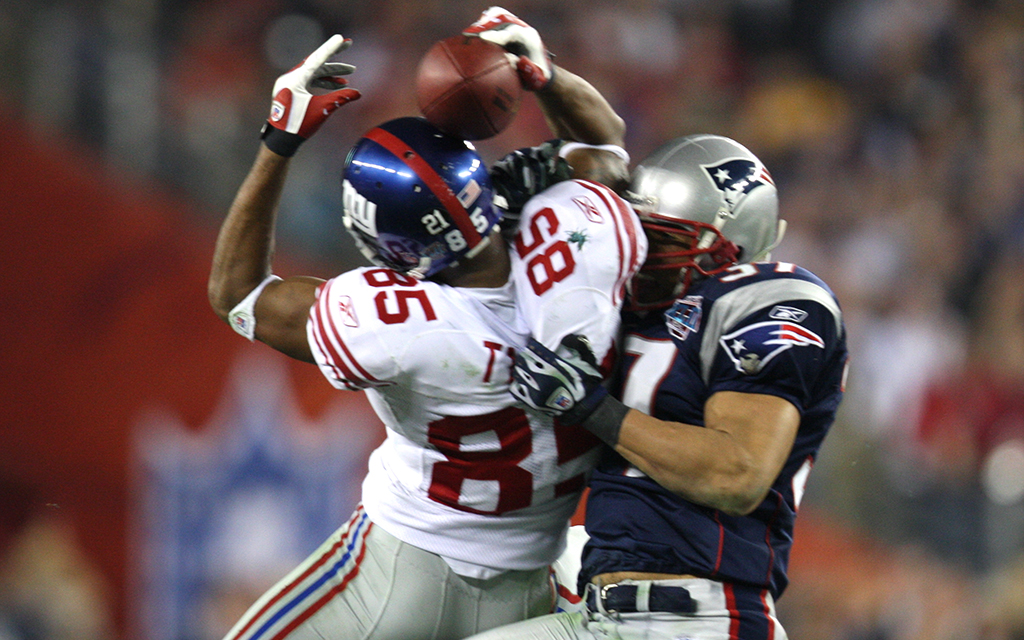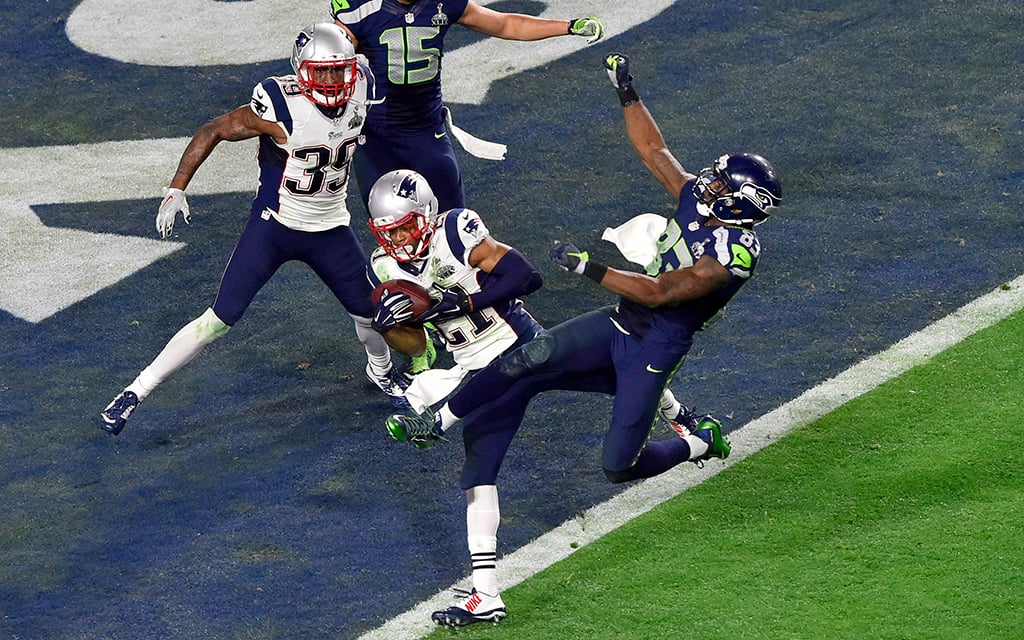Super Bowl XXX: The Cowboys’ last stand
The Dallas Cowboys were an NFL dynasty when they arrived in Tempe for the 1996 Super Bowl against the Pittsburgh Steelers. The Cowboys won 27-17 at Sun Devil Stadium to capture their third championship in four seasons.
The victory was especially rewarding for Phoenix native Darren Woodson, a safety who was a cornerstone of the Cowboys franchise during that era.
Woodson starred at Maryvale High School and played college football at Arizona State, where he stood on the same Sun Devil Stadium turf before becoming the Cowboys’ second-round pick in the 1992 NFL draft.
“It was awesome man, because I grew up in Phoenix, went to school at Arizona State, and here I am playing in (the 1996 Super Bowl) at the school I went to and my home field basically, and honestly on a field that as a kid I used to dream of playing on,” Woodson said. “So that was special.”
The Cowboys had defeated the Buffalo Bills in the 1993 and 1994 Super Bowls, but major changes were in store after winning back-to-back titles.
A rift had formed between Cowboys coach Jimmy Johnson and team owner Jerry Jones, and former Oklahoma coach Barry Switzer took over the job before the 1994 NFL season.
The Cowboys suffered a heartbreaking loss to the San Francisco 49ers in the NFC championship game during Switzer’s first season. A controversial missed pass interference call on the 49ers Deion Sanders dashed the Cowboys’ title hopes.
Long before that play, Woodson foreshadowed the decline of “America’s Team.”
“I kind of started to see the fall of the Cowboys organization beginning midway through that ‘94 season,” Woodson said. “We just weren’t the same team. We didn’t have the same personality. We weren’t clicking on all cylinders, practices weren’t the same.
“Jimmy had a cadence and a system that we all believed in, and it was a change that not everybody accepted when Barry came in. We wanted it all the same, including myself.”
Woodson said the 1995 season was the most difficult, by far, despite the Cowboys winning the NFC championship to earn another Super Bowl berth.
“Of the three championships that I have, ‘92, ‘93, ‘95, the ‘95 team was by far the least talented,” Woodson said. “We had to overcome a ton of injuries that season.”
The injured players included Sanders, who the Cowboys had acquired in Week 2 of the ‘95 season. Sanders, who at the time played major league baseball and in the NFL, made his debut in Week 9 after undergoing arthroscopic ankle surgery for an injury he suffered while playing for the Cincinnati Reds.
The Cowboys wrapped up the regular season at Sun Devil Stadium, in a Christmas Day game against the Arizona Cardinals on “Monday Night Football.”
According to Woodson, the team found out on the plane Sunday that the Atlanta Falcons had beaten the 49ers, which meant a win on Christmas would give Dallas the No. 1 seed. But Woodson and the Cowboys knew the regular-season finale was no cakewalk, despite Arizona’s 4-11 record.
“Playing at Sun Devil Stadium against the Cardinals was never an easy task,” he said. “At the time they were an NFC East opponent. They were loaded with talent as well, and they knew the stakes were on the line for us.”
The Cowboys took care of business to win 37-13, and got an early preview of the 1996 Super Bowl venue.
In the playoffs, Dallas swiftly dismissed the Philadelphia Eagles and Green Bay Packers to book its return trip to Tempe, where the AFC Champion Steelers awaited another Super Bowl clash between the two storied franchises.
“We finally got there against the Pittsburgh Steelers in Arizona, had that game in hand in the first half, played well for three quarters, then in the fourth quarter we kind of fell apart and let them back in the game,” Woodson said.
In the end, Dallas walked away with a relatively comfortable victory, but Woodson wasn’t in the mood to celebrate in his old college stadium. The win didn’t carry the same feeling as the club’s previous Super Bowl victories.
“When we won the championships in 1992 and 1993, we celebrated in that locker room,” Woodson said. “Even afterwards, we ran together, we went out and partied together after those wins, man. We were a really tight-knit team.
“We won that game in ‘95, and I can tell you, I sat on my stool in that locker room, and it wasn’t jubilation. It was just relief. And I’m telling you, moving forward from that point on, I just knew, this is going to be different, and it has been.
“It’s been different since we sat in that locker room in ‘95. That organization has not been the same. I just thought there were some underlying issues within the organization that needed to change, and it still hasn’t changed.”
Woodson didn’t stop there.
“I think it’s huge when a coach can totally control the outcome of personnel,” Woodson said. “If you’re going to shop and you’re going to put your team out (on the field), you need to be buying the groceries. Your coaching staff should be heavily involved with the draft. Jimmy Johnson bought all the groceries – fired guys, cut people; it didn’t matter. He ran football operations.”




